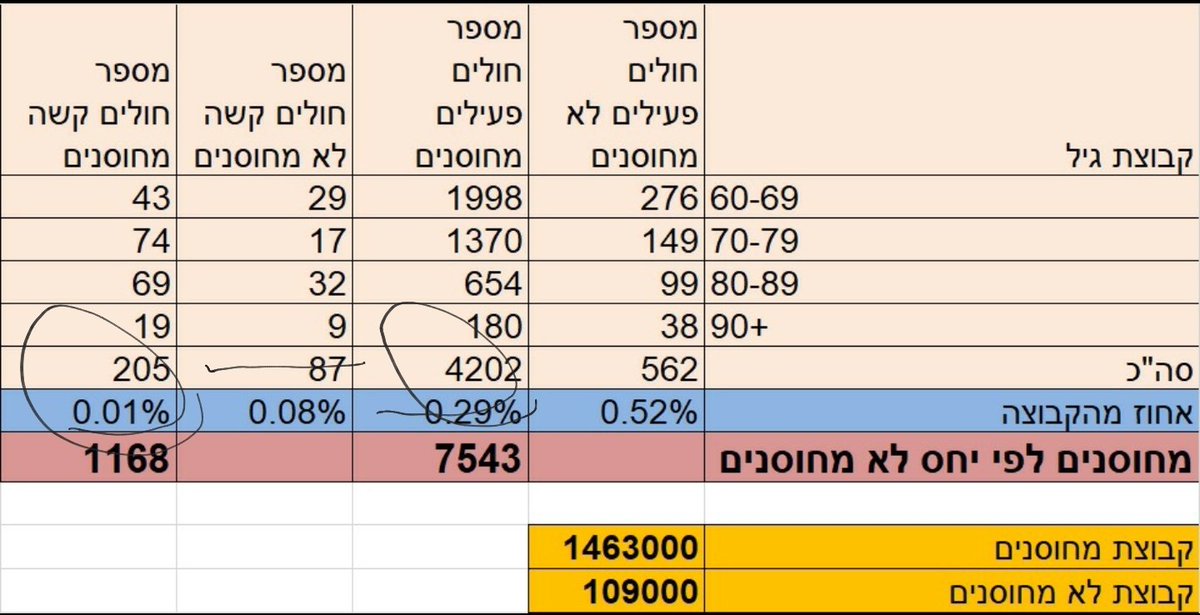
The Israeli MoH released some results about the effectiveness of the booster to tame infection rate.
Behavior or immunity or both?
A short technical thread with interesting results.
🧵🧵🧵
Behavior or immunity or both?
A short technical thread with interesting results.
🧵🧵🧵
Israel does not conduct an RCT for the third dose. Thus, the main analysis for booster-VE is comparing the cases in boosted vs 2nd dosed as a proxy for increased protection. But boosted individuals might be ⬆️covid19-worried, leading to lower ⬇️exposure.
To mitigate that, the MoH adjusted for basic demography and calendar day of infection and reported the graph below. Y-axis: Booster vs 2nd dose fold protection as a function of days from booster.
But there is something weird...🧐
But there is something weird...🧐

Check out the blue arrow. The booster is super effective 1 day after the jab and it starts to exponentially drop until day 6 before going up! How can it be? From immunological perspective, your memory cells just started working after the first day...
Here is my theory: the booster can create covid-like symptoms and people know that. So if a person feels bad the day after, he would say to himself: "Haim, relax. It is just the booster" and not get tested. Same thing if they have symptoms at the 2nd day but to a smaller extent.
and the process of delay in testing continues for a few days. This behavioral effect is so strong that it easily creates VE-booster of 2x-6x improvements in the first few days, which quickly wanes. The basic adjustments of the MOH are not enough to such behavioral diff.
So I am happy to see the increase in the VE-booster in later days and SURE that it does improve the situation.
However, it is clear that not all biases were addressed in this analysis.
However, it is clear that not all biases were addressed in this analysis.
For instance, if 10% of people felt like a wreck after the booster and stayed home, exposure will go down; if people who completed the 13th day can be the most covid-worried, exposure⬇️. Again, I do think booster WORKS but would wait for more final numbers.
• • •
Missing some Tweet in this thread? You can try to
force a refresh












